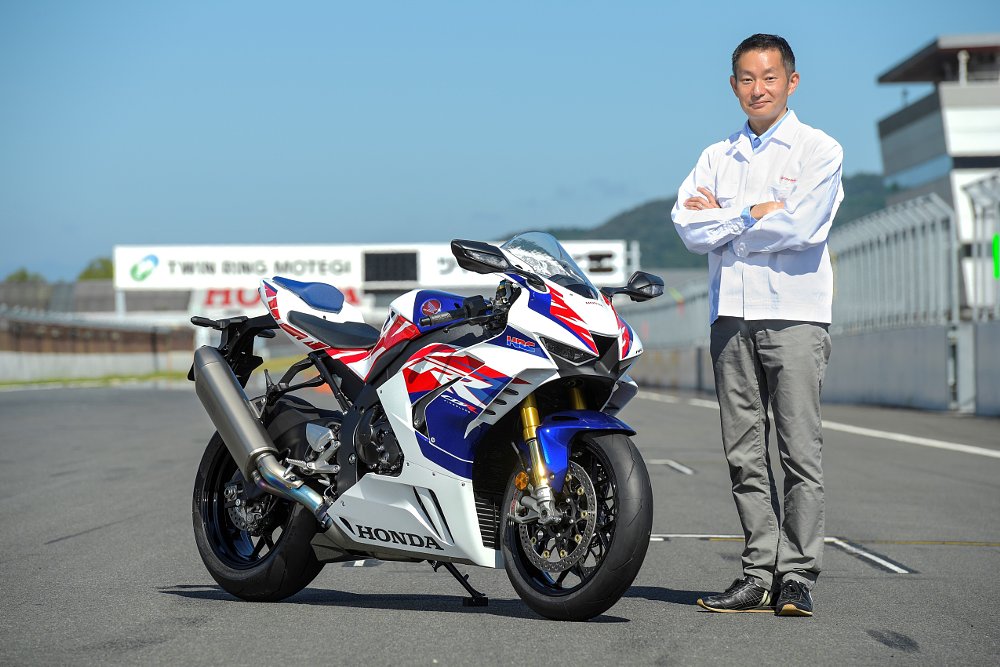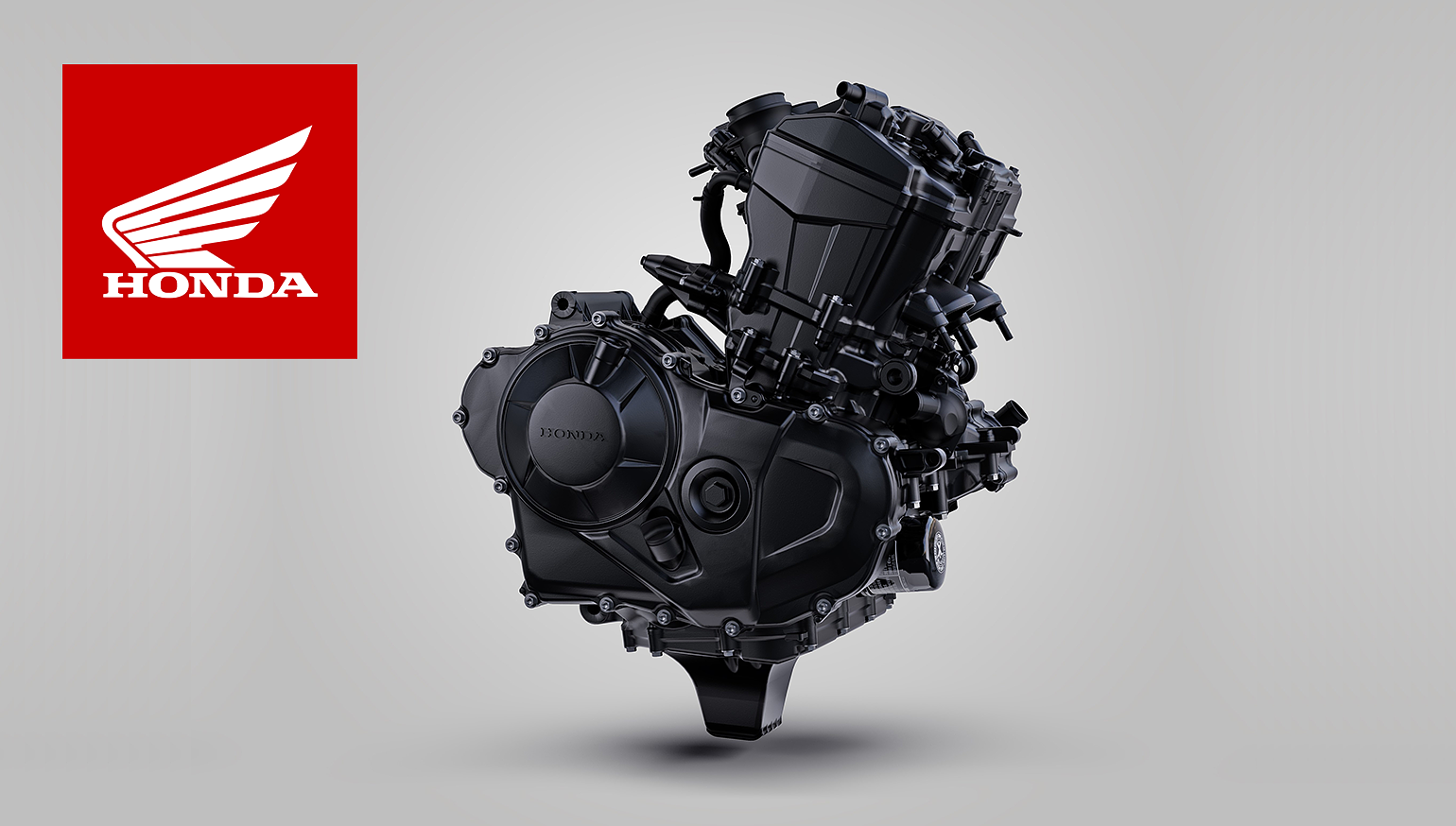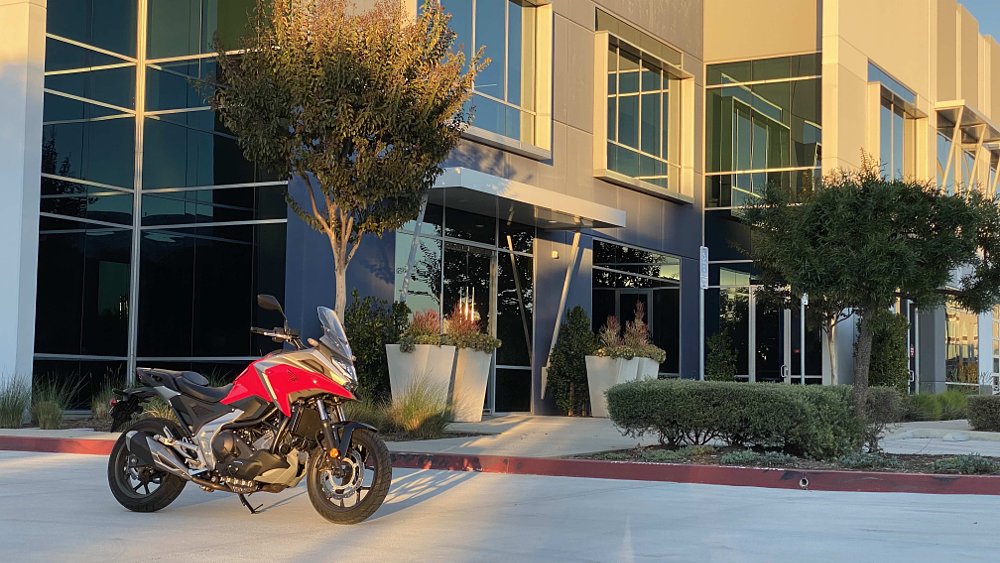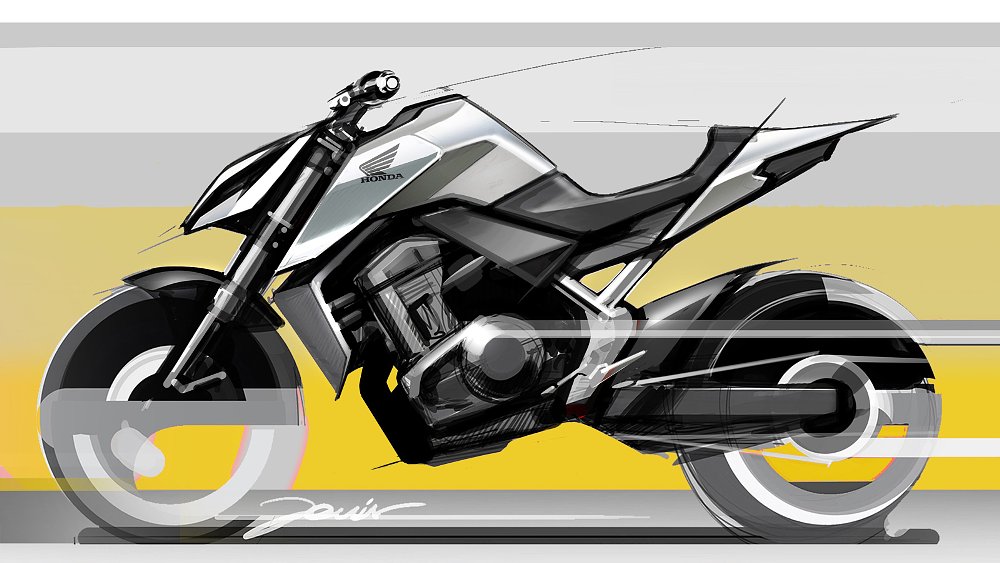After months of speculation, Honda finally made an official announcement this week about its new 750-class parallel-twin engine. The news came in a press release from Honda Europe titled “New Hornet Concept Update,” so I'd bet my best pair of riding boots that we'll see a new Hornet soon.
The engine will be used in some other models, too, but let’s start with a look at the revealed specs for this new short-stroke engine.
Two cylinders, one cam
Honda Europe says that its p-twin makes a claimed 90 horsepower at 9,500 rpm, and its peak torque of 52 foot-pounds. That’s up there with a few of today’s hotter twins of the same class, but the new engine has an old Honda trick up its sleeve. It’s called Unicam.
If you haven’t seen this system before, it’s a clever variation of a single overhead cam (SOHC) design that gives performance similar to a dual overhead cam (DOHC) engine thanks to some key differences. The intake lobes on the Unicam engine actuate the two intake valves directly. This is standard practice on most modern motorcycle engines with overhead cams. Now, instead of having a second camshaft that actuates the two exhaust valves, Honda puts one exhaust lobe on the same camshaft as the intake, and the actuation force reaches the exhaust valves using a forked roller rocker arm that is both sturdy and lightweight.
Introduced 20 years ago, the Unicam is still a viable alternative to a traditional DOHC design for a few reasons. The included valve angle can be narrower than a DOHC engine, which means less piston dome is required for a given compression ratio and less heat accumulation due to a faster burn of the air and fuel charge. The engine’s head can be built shorter to create a more compact engine, too.
The 755 cc engine is an eight-valve design, so its Unicam will have four lobes for intake and two for exhaust. Looking at the peak horsepower and torque figures, this twin should be a revver, and Honda says it will have “classic top end Hornet ‘sting’ bolstered by strong mid-range torque for pure riding enjoyment and usability.” The 270-degree crank’s uneven firing is a time-honored way to give humdrum parallel twins some pizzaz. The 755 Unicam sounds like it’s off to a strong start.
What future motorcycles might get this engine?
Honda built a Hornet concept around this engine that hints at things to come. Test Project leader for this motorcycle is Fuyuki Hosokawa, who also headed up the recent CBR1000RR-R Fireblade.

“Before starting this project, we thought long and hard about what kind of performance we wanted to give to the rider,” he says. “We knew that it was essential to keep the classic Hornet top end power ‘hit’ and at the same time, as a new generation Hornet for modern times, we wanted the engine to have a really strong torquey feel and ‘throbbing’ sensation at low to mid rpm. Our aim has always been to match these to the lightest, most agile handling possible, to make every ride – even in town – as engaging and fulfilling as possible.”
Sport nakeds aren’t the only motorcycles that could benefit from a parallel twin with these characteristics. I’ll be stunned if we don’t see a Honda Transalp reboot in the next few years to target the middleweight adventure-tourer segment. Other possibilities might include a sport-oriented CBR model to rival Yamaha’s R7, a retro “Hawk 75,” or even a Rebel. What if the XR650L became the XR750L with a torque-biased tune of the new motor? Will Honda add DCT to this design, opening the door for a revamped NC750 standard or a return of the Silver Wing badge? We’ll find out soon enough.
Parallel twins are here to stay
P-twins of this caliber will define our current era of motorcycling in the same way that transverse fours dominated the market in decades past. They may not be to everyone’s liking, but they sure are sensible. Although Honda already has a 750 twin in the NC750X, it’s bulkier than the new design while only producing a claimed 58 horsepower. Expect more 755 action from Honda in the next few months as we enter the upcoming 2023 motorcycle release season.

 Membership
Membership







